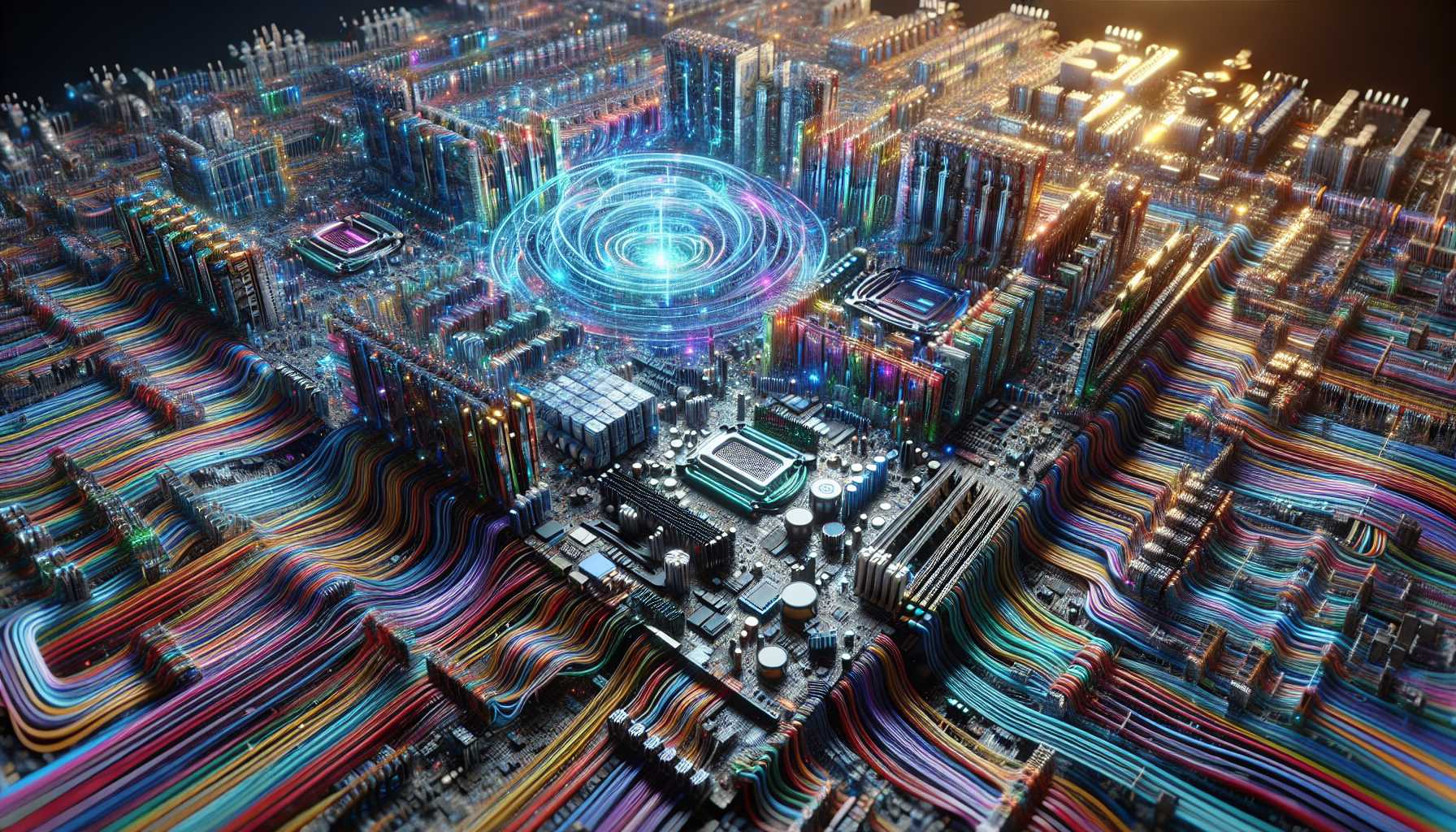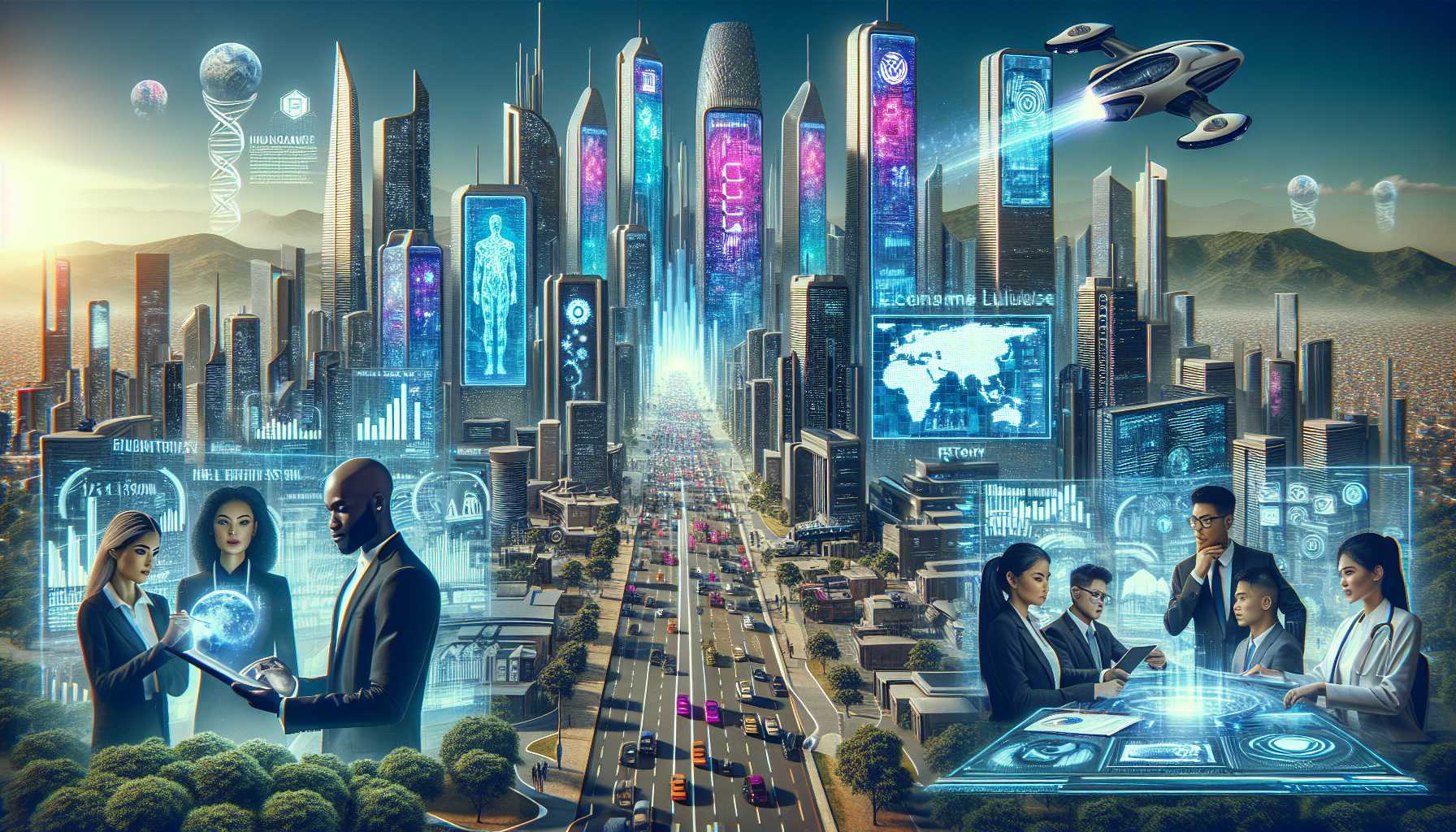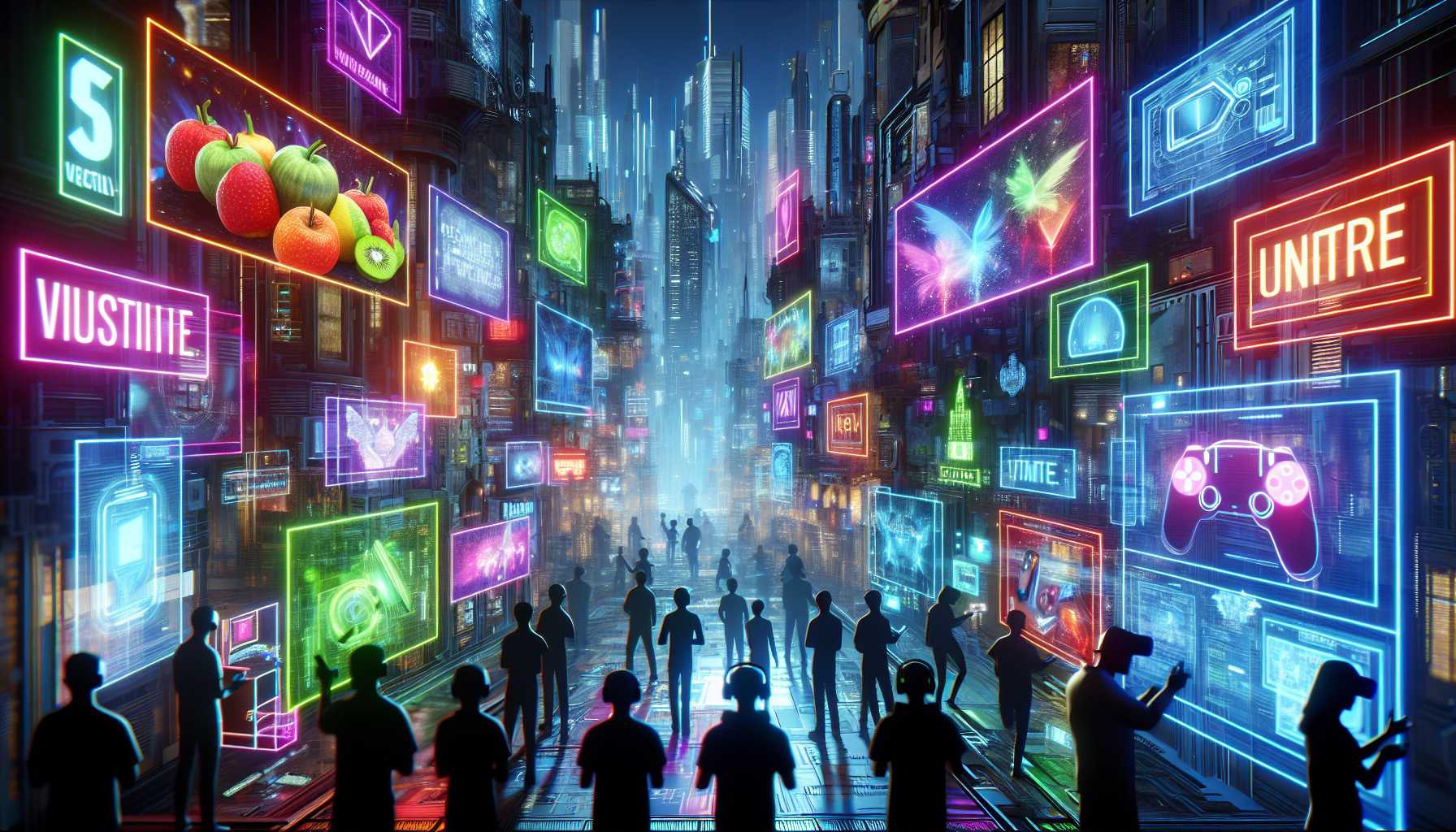The Grand Debate on AI and Employment
 What does the proliferation of artificial intelligence (AI) mean for the future of work? It’s the question percolating in the corridors of research labs and boardrooms alike. Notably, MIT’s Computer Science and Artificial Intelligence Laboratory (CSAIL) has rolled out fresh research poking holes in the dramatic narrative of mass unemployment spurred by AI. Economically, automation is not as black and white as often portrayed. While AI, particularly computer vision, is proficient at tasks like scrutinizing product quality, the sticker price of crafting an AI system that’s up to snuff is hefty. In the bakery example the MIT study cites, a thrifty AI system could automate food quality checks, affording potential savings; yet, the initial and ongoing expenses may leave businesses sticking with human bakers for now. Only a slice of the pie – 23% of vision task wages – is apparently worthwhile automating with AI. This means, humans retain their edge when it comes to the economics of employment, at least for the moment. The tide could change with decreasing AI costs, but we’re talking decades, not years. This doesn’t wholly unravel the narrative of AI as a job stealer – it adds nuance, emphasizing the complexity of task-based versus role-based automation feasibility and the need for long-term policy initiatives. In short, the AI upheaval might not be as rapid or catastrophic as some doomsayers predict.
What does the proliferation of artificial intelligence (AI) mean for the future of work? It’s the question percolating in the corridors of research labs and boardrooms alike. Notably, MIT’s Computer Science and Artificial Intelligence Laboratory (CSAIL) has rolled out fresh research poking holes in the dramatic narrative of mass unemployment spurred by AI. Economically, automation is not as black and white as often portrayed. While AI, particularly computer vision, is proficient at tasks like scrutinizing product quality, the sticker price of crafting an AI system that’s up to snuff is hefty. In the bakery example the MIT study cites, a thrifty AI system could automate food quality checks, affording potential savings; yet, the initial and ongoing expenses may leave businesses sticking with human bakers for now. Only a slice of the pie – 23% of vision task wages – is apparently worthwhile automating with AI. This means, humans retain their edge when it comes to the economics of employment, at least for the moment. The tide could change with decreasing AI costs, but we’re talking decades, not years. This doesn’t wholly unravel the narrative of AI as a job stealer – it adds nuance, emphasizing the complexity of task-based versus role-based automation feasibility and the need for long-term policy initiatives. In short, the AI upheaval might not be as rapid or catastrophic as some doomsayers predict.
The Limitations of AI’s Job Takeover
 The MIT study has its blind spots, from focusing solely on vision tasks to not considering AI’s role in job augmentation or new job creation. Self-service AI systems through vendors like OpenAI certainly promise a future where more tasks are automated efficiently. But the study asks us to pump the brakes on the AI apocalypse wagon; economies and workers might just have breathing room to adapt.
The MIT study has its blind spots, from focusing solely on vision tasks to not considering AI’s role in job augmentation or new job creation. Self-service AI systems through vendors like OpenAI certainly promise a future where more tasks are automated efficiently. But the study asks us to pump the brakes on the AI apocalypse wagon; economies and workers might just have breathing room to adapt.
The Echoing Sentiments from Big Finance and Academia
 Statistical soothsaying from Goldman Sachs and McKinsey to university surveys paints a picture with broader strokes: AI could overhaul economies, influencing up to 80% of jobs. Are we standing on the precipice of an AI-induced labor transformation? The MIT researchers urge caution, implying that, for now, these predictions are more science fiction than imminent reality. #The AI Chronicles of Chronosphere, ElevenLabs, and NumberEight
Statistical soothsaying from Goldman Sachs and McKinsey to university surveys paints a picture with broader strokes: AI could overhaul economies, influencing up to 80% of jobs. Are we standing on the precipice of an AI-induced labor transformation? The MIT researchers urge caution, implying that, for now, these predictions are more science fiction than imminent reality. #The AI Chronicles of Chronosphere, ElevenLabs, and NumberEight
Chronosphere’s AI-Powered Observability Expansion
 Chronosphere, a trailblazer in cloud-native observability, snapped up Calyptia, home to the Fluent Ecosystem. This acquisition arms Chronosphere with cutting-edge tools like Fluentd and Fluent Bit. The chess move reflects a trending strategy – powerhouses seeking end-to-end platforms to unify tools under one banner. What does it spell for users? A comprehensive system to manage metrics, logs, and traces from cradle to grave. In the grand clambake of observability data – an area where surges in scale and cost are the norm – Chronosphere’s latest gambit aims to give developers the reigns to marshal information more intuitively, and seamlessly.
Chronosphere, a trailblazer in cloud-native observability, snapped up Calyptia, home to the Fluent Ecosystem. This acquisition arms Chronosphere with cutting-edge tools like Fluentd and Fluent Bit. The chess move reflects a trending strategy – powerhouses seeking end-to-end platforms to unify tools under one banner. What does it spell for users? A comprehensive system to manage metrics, logs, and traces from cradle to grave. In the grand clambake of observability data – an area where surges in scale and cost are the norm – Chronosphere’s latest gambit aims to give developers the reigns to marshal information more intuitively, and seamlessly.
ElevenLabs: The Billion-Dollar Voice of AI
 ElevenLabs, spinning its web of AI syntheses, crafts tools that voice the digital landscape. In the limelight is its browser-based app, fine-tuning synthetic voices with human-like precision. From its roots in film dubbing to generating audio for games, ElevenLabs not only expands its technological breadth but also its market footprint, with industry giants like The Washington Post and Paradox Interactive tuning in. Despite controversy – from 4chan’s misuse to backlash from the voice-over community – ElevenLabs sails forward with a marketplace model, a digital agora where voice actors can monetize their AI-augmented talents. It’s a landscape in flux, with questions of ethics and industry impact hanging in the balance.
ElevenLabs, spinning its web of AI syntheses, crafts tools that voice the digital landscape. In the limelight is its browser-based app, fine-tuning synthetic voices with human-like precision. From its roots in film dubbing to generating audio for games, ElevenLabs not only expands its technological breadth but also its market footprint, with industry giants like The Washington Post and Paradox Interactive tuning in. Despite controversy – from 4chan’s misuse to backlash from the voice-over community – ElevenLabs sails forward with a marketplace model, a digital agora where voice actors can monetize their AI-augmented talents. It’s a landscape in flux, with questions of ethics and industry impact hanging in the balance.
NumberEight’s Partnership with Adverty and McDonald’s in the Gaming Arena
 In the pixelated theater of in-game advertising, NumberEight’s foray with Adverty has dealt a winning hand to McDonald’s, using Euclid Lite for ID-less demographic targeting. Their gambit? Leveraging AI-driven predictions of age and gender, coupled with premium in-game ad placements, to bolster McDonald’s brand among gamers. This venture highlights a paradigm shift – ads woven into the gaming fabric without the need for intrusive data-snatching. It’s a showcase of NumberEight’s machine learning muscle, translating into a mammoth leap in brand consideration and preference for McDonald’s, and a testament to the untapped potential of in-game advertising. #Investing in AI’s Financial Future
In the pixelated theater of in-game advertising, NumberEight’s foray with Adverty has dealt a winning hand to McDonald’s, using Euclid Lite for ID-less demographic targeting. Their gambit? Leveraging AI-driven predictions of age and gender, coupled with premium in-game ad placements, to bolster McDonald’s brand among gamers. This venture highlights a paradigm shift – ads woven into the gaming fabric without the need for intrusive data-snatching. It’s a showcase of NumberEight’s machine learning muscle, translating into a mammoth leap in brand consideration and preference for McDonald’s, and a testament to the untapped potential of in-game advertising. #Investing in AI’s Financial Future
AI: The Slow-Burn Path to Trillion-Dollar Glory
 AI’s stock market saga may be less of a meteoric ascent, more of a gradual climb to riches. With industry giants like Advanced Micro Devices (AMD), Microsoft (MSFT), and Palantir Technologies (PLTR) leading the charge, AI’s market integration shapes a new era of potential lifetime investments. AI technologies come at varying price points, but their incipient role in businesses large and small paints a bullish picture for the future.
AI’s stock market saga may be less of a meteoric ascent, more of a gradual climb to riches. With industry giants like Advanced Micro Devices (AMD), Microsoft (MSFT), and Palantir Technologies (PLTR) leading the charge, AI’s market integration shapes a new era of potential lifetime investments. AI technologies come at varying price points, but their incipient role in businesses large and small paints a bullish picture for the future.
AMD, Microsoft, and Palantir: The Vanguard of AI Infusion
Each player brings its own flavor to the AI smorgasbord. AMD fires ahead with its AI chip arsenal, seizing a stake in the ferocious AI chip market. Microsoft integrates generative AI into its flagship products with grace and speed, seeking ways to monetize and magnify user productivity. Palantir, the data strategist, entrenches its AI-infused software deeper into organizational fibers, emboldening its role as a foundational business tool. #Conclusion: A Balanced View on AI’s Market Mechanics AI undoubtedly steers the wheel of change, but whether it leads to innovation’s utopia or employment’s dystopia remains an unfurling story. The nuanced conclusions arising from MIT’s research and the tech industry’s recent maneuvers paint a picture of AI as both a harbinger of efficiency and an ally to human ingenuity. How businesses, workers, and society at large will navigate this brave new world is an unfolding tale, with each chapter promising new challenges and opportunities. AI’s influence seeps beyond corporate earnings into the fabric of everyday work and life. Yet, each prediction serves as a reminder – stay alert, adaptable, and open to the untapped potential that AI invites. Fascinating? Absolutely. Terrifying? Perhaps. One thing is certain: AI’s journey is far from over, and its true impact on job automation, just like the technology itself, is a code yet to be fully cracked







